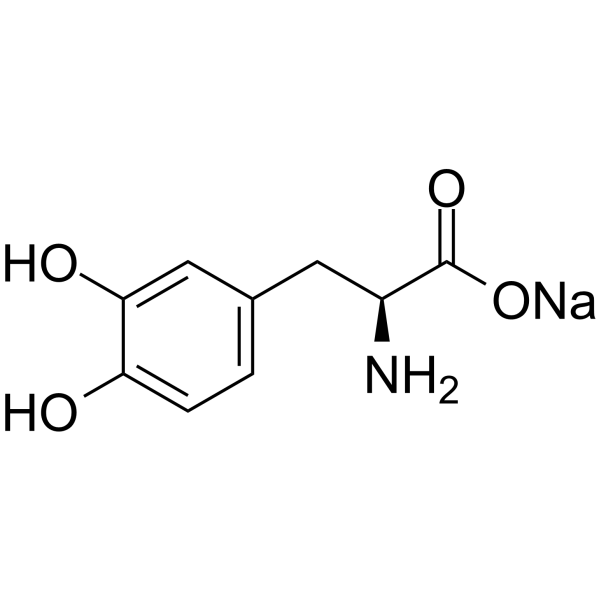L-DOPA sodium
Modify Date: 2024-01-12 15:10:49

L-DOPA sodium structure
|
Common Name | L-DOPA sodium | ||
|---|---|---|---|---|
| CAS Number | 63302-01-2 | Molecular Weight | 219.17 | |
| Density | N/A | Boiling Point | N/A | |
| Molecular Formula | C9H10NNaO4 | Melting Point | N/A | |
| MSDS | N/A | Flash Point | N/A | |
Use of L-DOPA sodiumL-DOPA (Levodopa) sodium is an orally active metabolic precursor of neurotransmitters dopamine. L-DOPA sodium can cross the blood-brain barrier and is converted into dopamine in the brain. L-DOPA sodium has anti-allodynic effects, and can be used for Parkinson's disease research[1][2][3]. |
| Name | L-DOPA sodium |
|---|
| Description | L-DOPA (Levodopa) sodium is an orally active metabolic precursor of neurotransmitters dopamine. L-DOPA sodium can cross the blood-brain barrier and is converted into dopamine in the brain. L-DOPA sodium has anti-allodynic effects, and can be used for Parkinson's disease research[1][2][3]. |
|---|---|
| Related Catalog | |
| Target |
Human Endogenous Metabolite |
| In Vivo | L-DOPA sodium (20 mg/kg; orally) reduces Rotenone-induced motor dysfunction[3]. L-DOPA sodium (0-100 mg/kg; orally) reverses tactile, cold and heat allodynia in neuropathic rat without any side effect in sprague-Dawley rats[4]. Animal Model: C57BL/6J mice (7-week-old)[3] Dosage: 20 mg/kg Administration: Orally Result: Reduced Rotenone-induced motor dysfunction. Animal Model: Sprague-Dawley rats[4] Dosage: 10, 30, 50, 70, and 100 mg/kg Administration: Orally Result: Reverses tactile, cold and heat allodynia in neuropathic rat without any side effect. |
| References |
| Molecular Formula | C9H10NNaO4 |
|---|---|
| Molecular Weight | 219.17 |